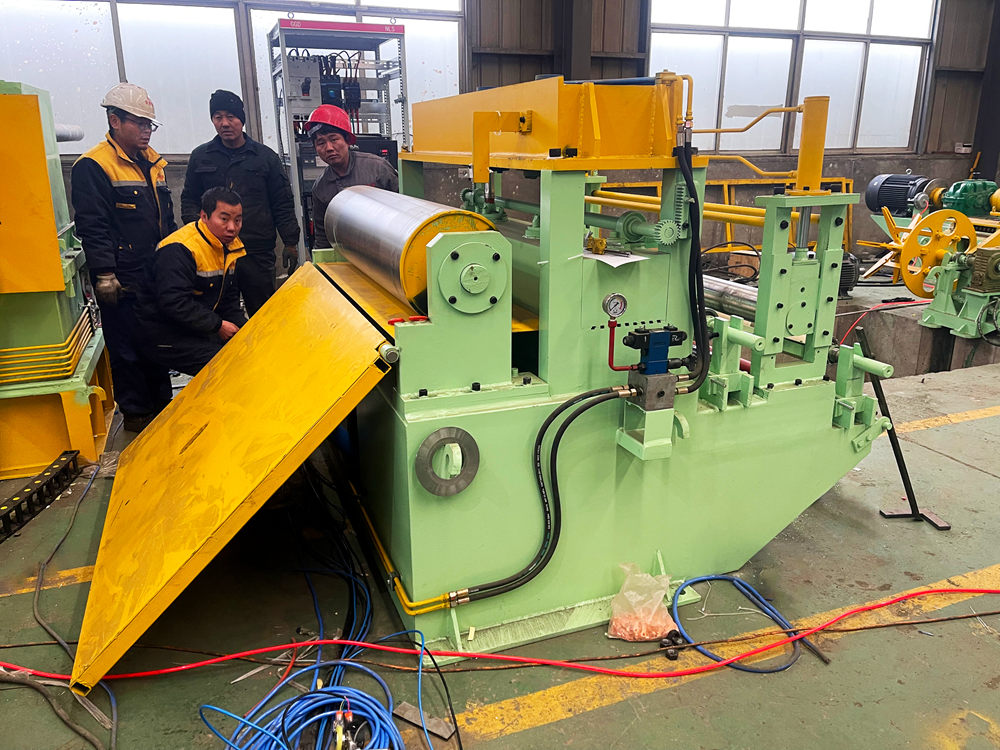
Understanding Steel Slitting Lines An Essential Process in Metal Fabrication
In the realm of metal fabrication, steel slitting lines play a crucial role in producing narrow strips of steel from wider coils. This process not only enhances the efficiency of metal usage but also meets the diverse needs of various industries by providing them with custom widths of steel. Understanding the components and functioning of a steel slitting line helps us appreciate this essential manufacturing technology.
What is a Steel Slitting Line?
A steel slitting line is a specialized machinery setup designed to cut wide coils of steel into narrower strips. The process begins with the input of a large, typically coiled sheet of steel, which is unwound and fed through a series of rollers. These rollers guide the steel through cutting tools that slice it into the desired widths. The end product is a series of narrower, coiled strips of steel that can be used in a variety of applications, from automotive components to construction materials.
The Components of a Steel Slitting Line
Steel slitting lines consist of several key components that work in unison to ensure an efficient and accurate slitting process
1. Uncoiler This part of the line holds the large coil of steel. The uncoiler unwinds the coil and feeds it into the slitting line. It is essential that the uncoiler applies a controlled tension to prevent the steel from becoming damaged during the unwinding process.
2. Leveling Machine Before the steel is slit, it must be leveled to remove any curvature or imperfections. The leveling machine flattens the steel, ensuring that the slitting tools make precise cuts without deviations.
3. Slitting Blades After leveling, the steel moves to the slitting section, where specially designed rotary blades make the cuts. These blades are positionable, allowing operators to adjust the width of each strip according to specific requirements.

4. Recuperation System Post slitting, the narrow strips are collected and recoiled into smaller coils. This system ensures that the strips are properly managed and stored for further processing or shipping.
5. Control System Modern steel slitting lines are equipped with advanced control systems that allow for real-time monitoring and adjustments. This technology ensures that the slitting process is optimized for speed and accuracy.
The Process of Steel Slitting
The steel slitting process begins with the uncoiling of the wide steel coil, which is then leveled by the leveling machine. Once the steel is flat, it passes through the slitting blades, where it is cut into narrower strips. As the strips are cut, they are guided onto recoiling shafts, where they are wound into smaller coils. The entire operation is monitored by the control system, which tracks speed, tension, and blade position to ensure consistency and minimize waste.
Applications of Slit Steel Strips
Slit steel strips have a wide range of applications across various industries. In the automotive sector, these strips are often used for frame construction, body panels, and other structural components. In the construction industry, they can be found in support beams, brackets, and reinforcements. Additionally, stainless steel slitting can provide materials for appliances, furnaces, and kitchenware, showcasing the versatility of slitting lines in catering to different market needs.
The Importance of Steel Slitting Lines
As industries continue to evolve and demand more specialized products, the significance of steel slitting lines becomes increasingly evident. They not only enhance production efficiency but also reduce material waste—vital in an era where sustainability is at the forefront of manufacturing practices. By ensuring precision and adaptability, steel slitting lines contribute significantly to the overall productivity of metalworking and fabrication sectors.
In conclusion, steel slitting lines represent a vital component in the metal manufacturing industry. By facilitating the conversion of wide steel coils into tailored strips, they play a significant role in meeting the diverse and evolving needs of various sectors. As technology continues to advance, we can expect further enhancements to the efficiency and capabilities of slitting processes, contributing to a more sustainable future in metal fabrication.